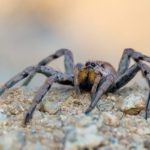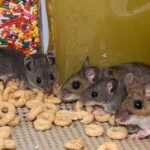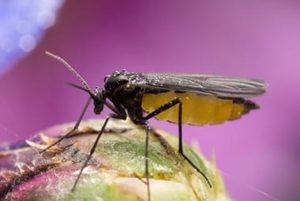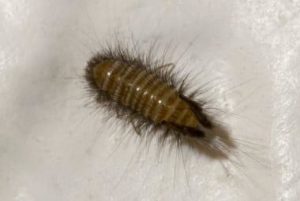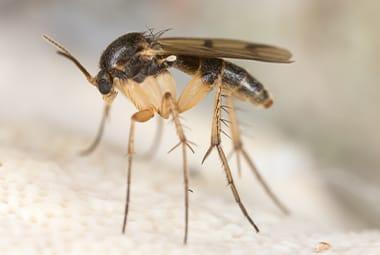
If you have recently started seeing mosquito-like bugs in your house and all your plants seem to be dying, you may be experiencing a fungus gnat infestation. Many people are unfamiliar with these pests, which is why we’ve put together this simple guide to fungus gnats in Knoxville.
What Fungus Gnats Look Like
Fungus gnats are very small, rarely growing to be more than 1/8th of an inch in length, although they can grow up to ½ of an inch. They have an appearance similar to mosquitoes with dark bodies and long, thin legs.
Fungus gnat larvae are worm-like in appearance with translucent white, legless bodies and black heads. They sometimes leave slime trails behind that are similar to slug trails.
Where to Find Fungus Gnats in Your Knoxville Home
Fungus gnats are attracted to moist soil and are often found in or near mulch, house plants, compost, and other organic items.
Outside of your house, you may find them in the landscaping around the perimeter of your house. They are attracted to light, so from this location, they may get inside through small openings around your windows or doors.
They may also get inside your Knoxville home by being carried inside in the soil used for houseplants.
If they get inside, you’re likely to find fungus gnats in your houseplants. You may also find them feeding on ripe or decaying fruits and vegetables on your counters or in other organic matter in your home.
The Problems Fungus Gnats Cause
Fungus gnats are primarily considered nuisance pests. However, when they get into your home, they are not without their problems.
- First, fungus gnats reproduce rapidly. Even if just a few get into your Knoxville home, they can quickly grow to out-of-control proportions.
- Second, fungus gnats destroy house plants. Fungus gnat larvae live in the soil and feed on the roots of plants. Eventually, the root damage causes your houseplants to die.
- Third, fungus gnats can contaminate food. When they feed on produce, they make it unfit to eat. Not only does this waste food and money, but if you are unaware of the contamination and end up eating the food, you could get sick. In this way, fungus gnats can be harmful to humans.
- Finally, fungus gnats spread bacteria. They spend time in some locations that are not sanitary. While there, they can pick up bacteria on their bodies that they can then spread to other locations, including your food and countertops.
How to Prevent Fungus Gnats
The best way to prevent fungus gnats in and around your home is to limit the things they love.
- Since they prefer moist soil, make sure you don’t overwater your gardens.
- Make sure mulched areas around your house receive plenty of sunlight so they don’t harbor wet, shady areas.
- Keep compost piles well away from your house.
- Be careful, when bringing potted plants into your house, that there aren’t any fungus gnat larvae in the soil.
- Ensure that windows and doors have no gaps or cracks around them.
- Make sure all window and door screens are in good repair without holes or tears.
How to Get Rid of Fungus Gnats
If you find fungus gnats in your home, you’ll want to take action quickly to prevent them from getting out of control. Russell’s Pest Control offers treatments that will get at the source of the problem, eliminating fungus gnats and helping you eliminate the things that are attracting them to your home.
A Simple Guide To Fungus Gnats In Knoxville in Knoxville TN
Serving East Tennessee since 1971
